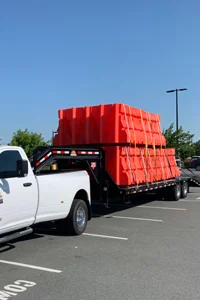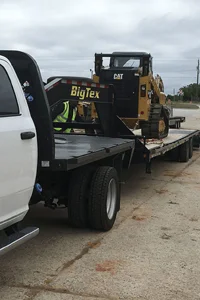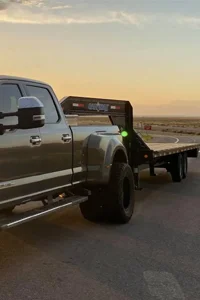LTL and FTL Trucking
Which is Right for Your Business?
LTL and FTL Trucking: Which is Right for Your Business?
Introduction to LTL and FTL Trucking
When it comes to shipping goods, choosing the right method is crucial for cost-efficiency, timely delivery, and ensuring the safety of your products. Less-than-Truckload (LTL) and Full-Truckload (FTL) trucking are two primary methods businesses use to transport goods. Understanding the differences between them can help you make an informed decision that aligns with your business needs.
Understanding LTL Trucking
What is LTL Trucking?
LTL trucking involves combining shipments from multiple customers to fill a truck. This method is ideal for smaller shipments that don't require a full trailer, typically ranging from 150 to 15,000 pounds.
Benefits of LTL Trucking
Cost-Effective: You only pay for the portion of the truck space you use, which can be much cheaper than renting an entire truck.
Flexibility: Ideal for small businesses with less frequent or smaller shipments.
Environmentally Friendly: Sharing truck space reduces the number of vehicles on the road, leading to lower emissions.
Drawbacks of LTL Trucking
Longer Transit Times: Multiple stops and handling points can increase delivery times.
Higher Risk of Damage: Increased handling and transfers can lead to a higher risk of damage to goods.
When to Use LTL Trucking
LTL is best for businesses that ship smaller quantities of goods, have flexible delivery schedules, and are looking to save on shipping costs.
Understanding FTL Trucking
What is FTL Trucking?
FTL trucking means hiring an entire truck to transport goods directly from the pickup location to the destination. This method is suitable for large shipments that can fill a truck or when speed and security are top priorities.
Benefits of FTL Trucking
Faster Delivery: Direct route without multiple stops ensures quicker transit times.
Lower Risk of Damage: Goods remain in the same truck, minimizing handling and potential damage.
Better for Large Shipments: Ideal for large or bulk shipments that can fill a truck.
Drawbacks of FTL Trucking
Higher Cost: Renting an entire truck is more expensive than sharing space in LTL trucking.
Less Flexible: Not ideal for smaller shipments due to higher costs.
When to Use FTL Trucking
FTL is best for large shipments, high-value or fragile goods that need minimal handling, and when time is of the essence.
Comparing LTL and FTL Trucking
Cost Comparison
LTL is generally more cost-effective for smaller shipments, while FTL can be more economical for large shipments when considering cost per unit weight.
Time Efficiency
FTL offers faster transit times due to direct routes, whereas LTL can take longer because of multiple stops and transfers.
Flexibility and Scalability
LTL provides greater flexibility for small businesses and irregular shipments. FTL is better for companies with consistent large shipments.
Security and Safety
FTL minimizes the risk of damage as goods are less handled. LTL, with more transfers, has a slightly higher risk of damage but is usually adequately insured.
Choosing Between LTL and FTL Trucking
Factors to Consider
Type of Goods: Fragile or high-value items may be better suited for FTL.
Distance and Destination: Long distances might benefit from the direct route of FTL.
Budget Constraints: LTL can help save costs for smaller shipments.
Time Sensitivity: If quick delivery is crucial, FTL is the better option.
How to Optimize Your Shipping Strategy
Analyzing Shipping Needs
Evaluate the size, weight, and nature of your shipments to determine whether LTL or FTL is more suitable.
Combining LTL and FTL for Efficiency
Sometimes a combination of both methods can be the most efficient. For example, using FTL for long-haul transportation and LTL for final delivery.
Partnering with Reliable Carriers
Choose carriers with a good reputation for reliability, customer service, and technological capabilities.
Technological Advances in LTL and FTL Trucking
Role of Technology in Modern Trucking
Technology is transforming the trucking industry, making it more efficient and reliable.
GPS and Tracking Systems
Modern trucks are equipped with GPS and tracking systems, allowing for real-time updates and improved route planning.
Automation and AI in Logistics
Automation and AI help optimize routes, manage loads, and predict maintenance needs, leading to better efficiency and lower costs.
Environmental Impact of LTL and FTL Trucking
Carbon Footprint of LTL Trucking
LTL can be more environmentally friendly as it consolidates multiple shipments, reducing the number of trucks on the road.
Carbon Footprint of FTL Trucking
FTL can be less eco-friendly due to empty return trips or partial loads, but efficient route planning can mitigate this.
Strategies for Reducing Environmental Impact
Load Optimization: Ensuring trucks are fully loaded.
Eco-Friendly Vehicles: Using trucks with better fuel efficiency or alternative fuels.
Efficient Route Planning: Minimizing unnecessary mileage.
Real-World Examples
Case Study: A Small Business Using LTL
A small e-commerce store that ships products nationwide uses LTL to save on shipping costs while ensuring timely delivery to customers.
Case Study: A Large Corporation Using FTL
A large manufacturing company uses FTL to transport raw materials directly from suppliers to their production facility, minimizing transit times and handling.
Common Misconceptions about LTL and FTL Trucking
Misconception 1: LTL is Always Cheaper
While LTL can be cost-effective for small shipments, for large volumes, FTL might be more economical.
Misconception 2: FTL is Only for Large Companies
FTL can be used by any business that requires fast and secure shipping, regardless of size.
Misconception 3: LTL Shipments are Less Secure
While there is more handling in LTL, reputable carriers take measures to ensure the security and safety of goods.
Future Trends in LTL and FTL Trucking
Growth of E-commerce and Its Impact
The rise of e-commerce is increasing demand for both LTL and FTL trucking, with more frequent and diverse shipments.
Advances in Green Trucking Technologies
Electric and hybrid trucks are becoming more common, reducing the environmental impact of trucking.
Increasing Demand for Flexible Shipping Solutions
Businesses are seeking more flexible shipping options to meet varied customer demands and improve supply chain efficiency.
Conclusion
Choosing between LTL and FTL trucking depends on your specific business needs, shipment size, budget, and delivery timelines. Both methods have their benefits and drawbacks, and understanding these can help you make the best decision for your logistics strategy.
FAQs
LTL involves sharing truck space with other shipments, while FTL means hiring an entire truck for a direct delivery. LTL is cost-effective for smaller shipments, whereas FTL is faster and better for large shipments.
Consider factors like shipment size, budget, time sensitivity, and the nature of the goods. Analyzing these will help you decide whether LTL or FTL is more suitable.
For LTL, additional costs can include handling fees and potential damage claims. FTL costs are more straightforward but can be higher due to renting the entire truck.
Look for carriers with advanced GPS tracking, real-time updates, and automated logistics systems that enhance efficiency and reliability.
Optimize load capacities, use eco-friendly vehicles, and plan efficient routes to minimize fuel consumption and emissions.




